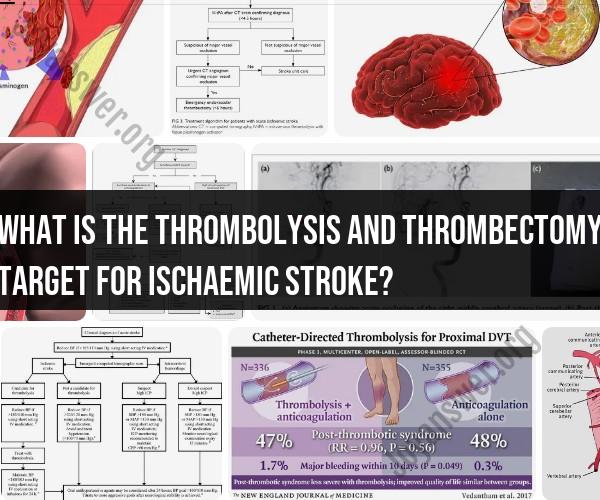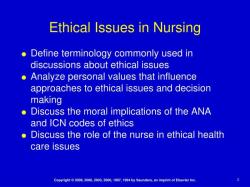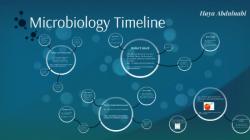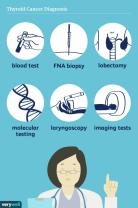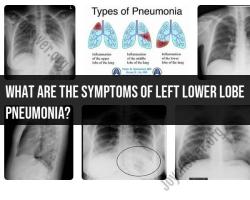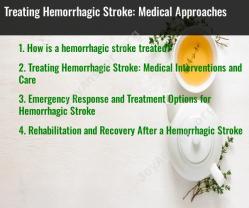What is the thrombolysis and thrombectomy target for ischaemic stroke?
The targets for thrombolysis and thrombectomy in the treatment of ischemic stroke are to rapidly restore blood flow to the affected area of the brain to minimize or prevent brain damage. These treatments are time-sensitive and are typically aimed at achieving the following goals:
Thrombolysis (with Alteplase or Tissue Plasminogen Activator - tPA):
- Time Window: Thrombolysis with tPA is most effective when administered within the first 4.5 hours (or up to 9 hours in some cases) from the onset of stroke symptoms. The sooner it is given, the better the outcomes.
- Target: The goal of thrombolysis is to dissolve the blood clot (thrombus) causing the blockage in a major cerebral artery. This can help restore blood flow to the brain tissue and potentially improve neurological outcomes.
Thrombectomy:
- Time Window: Thrombectomy is a mechanical procedure that involves the removal of the blood clot. It can be performed up to 24 hours or sometimes beyond in certain cases (e.g., with advanced imaging techniques).
- Target: The primary target of thrombectomy is to physically remove the blood clot from the blocked artery. This rapidly restores blood flow and can lead to significant improvements in stroke outcomes.
In both cases, the goal is to restore blood flow to the brain as quickly as possible to minimize brain damage and improve the chances of recovery. The specific treatment options and eligibility criteria may vary depending on the patient's individual circumstances, including the location and size of the clot, the time since the onset of symptoms, and other medical factors. Immediate medical attention and evaluation are critical in determining the appropriate treatment approach for each patient with an ischemic stroke.
